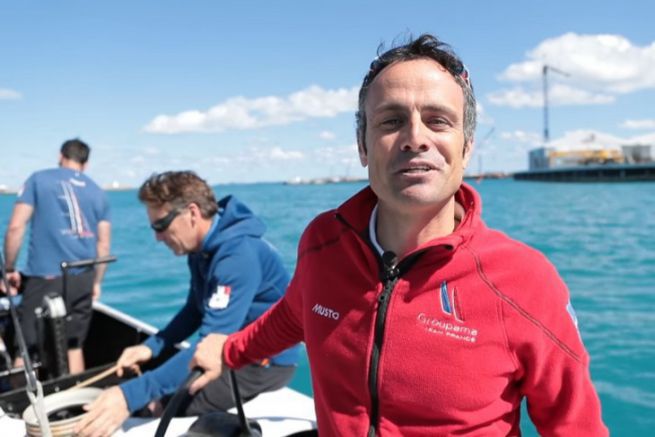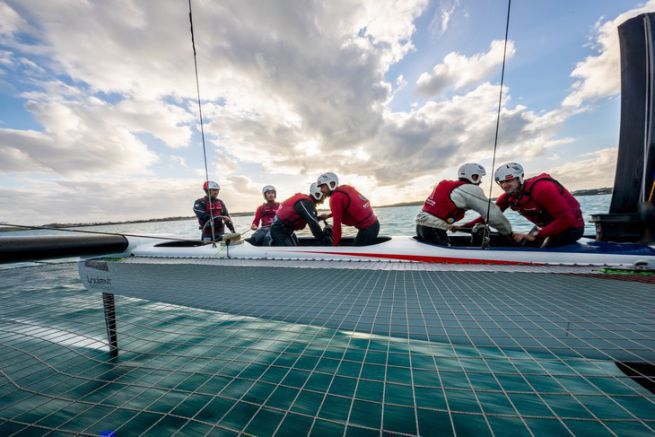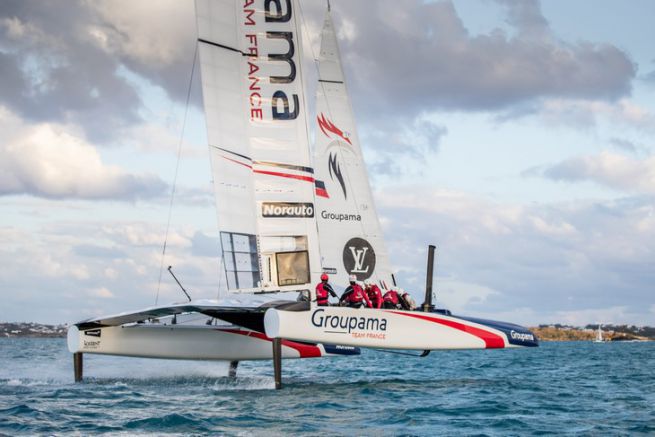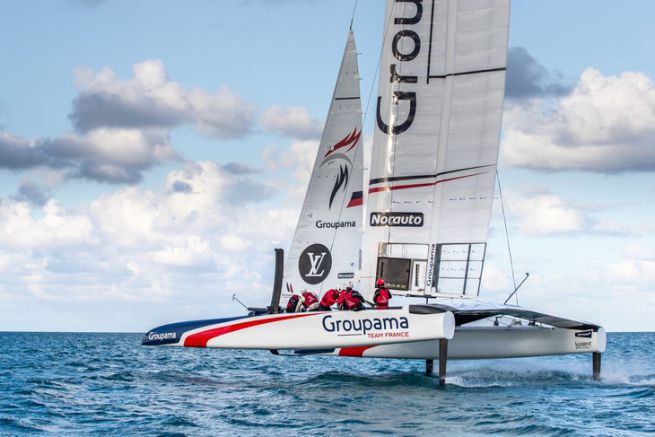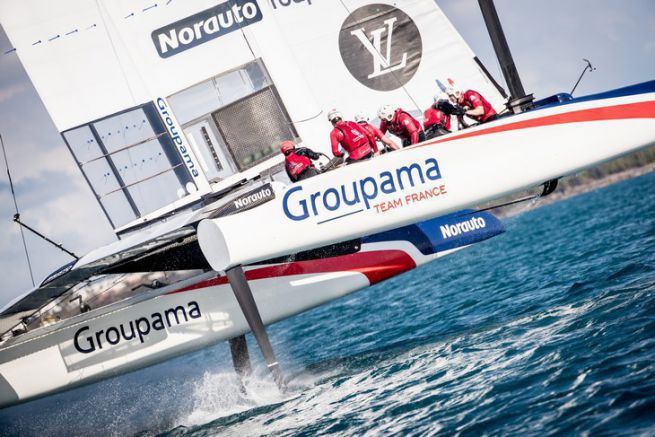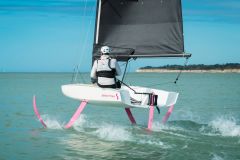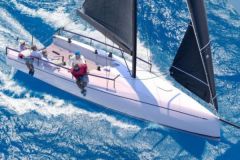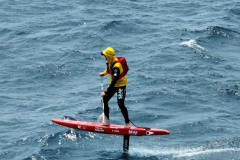The AC Class has two foils, but flies in a straight line on only one as well as on the two planes carrying the rudders at the rear. The foil supports 90% of the weight of the boat and consists of two parts: the shaft (vertical part) and the tip (horizontal part).
The shaft prevents the boat from drifting (crab movement) and against the effort of the sails. The tip, contrary to a classic drift, allows to push up so that the boat takes off "3 tons are applied up only on that part, which is much less than 1 m2" says Franck Cammas . The game consists in adjusting this part to have a stable flight height at all times "That's why we have controls at the helm with very small steps of angle change and it corrects the tip angle in this way and we call it rake adjustment. It's a pivot inside the hull."
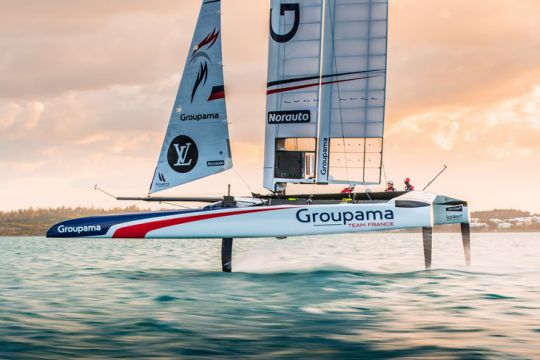
Another adjustment, called the cant, allows you to adjust the foil's inclination (the shaft) forward or backward, and thus to raise the tip more or less upwards. On AC Classes, the cant is used a lot when the hull is out of the water, to retract the foil and so that the tip does not touch the water "We could also use the cant to stabilize the boat, but it's not going as fast."
The goal of these settings is to have the tip as horizontal as possible, to have as few trails as possible. But this position remains the most unstable and requires much more attention.

 /
/ 
